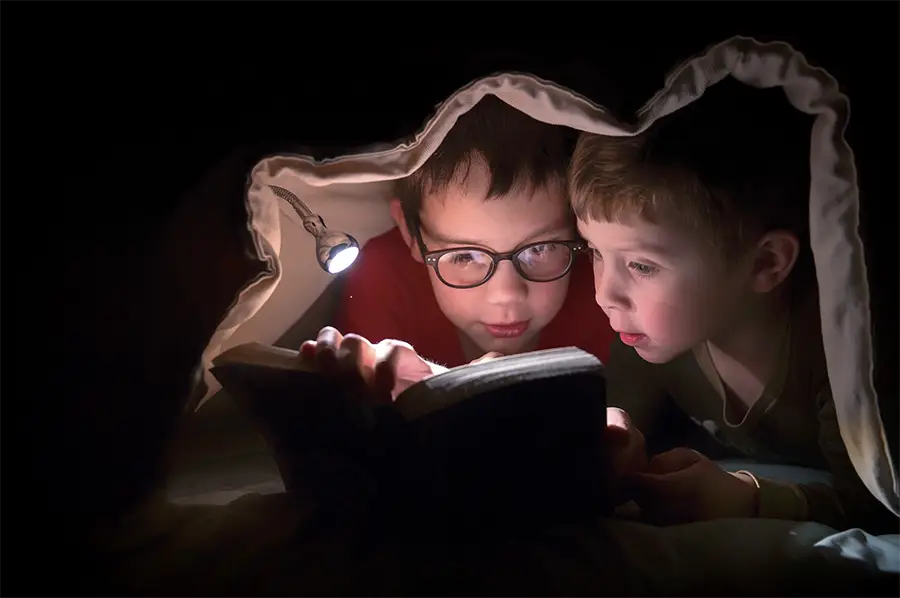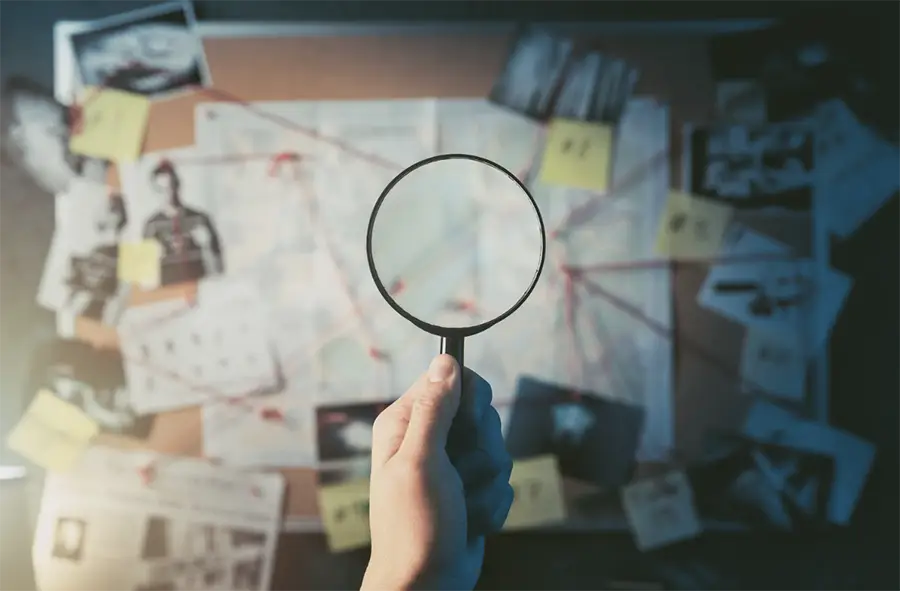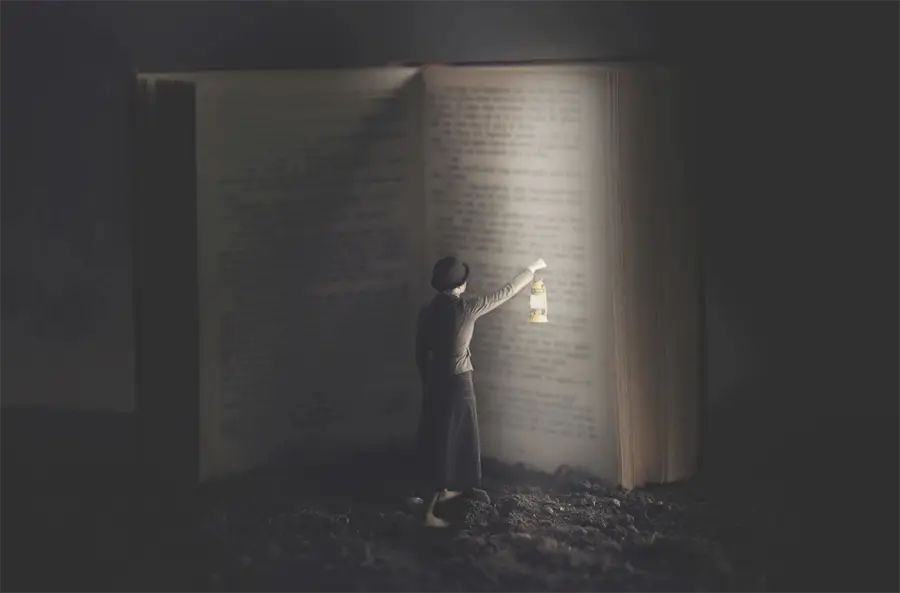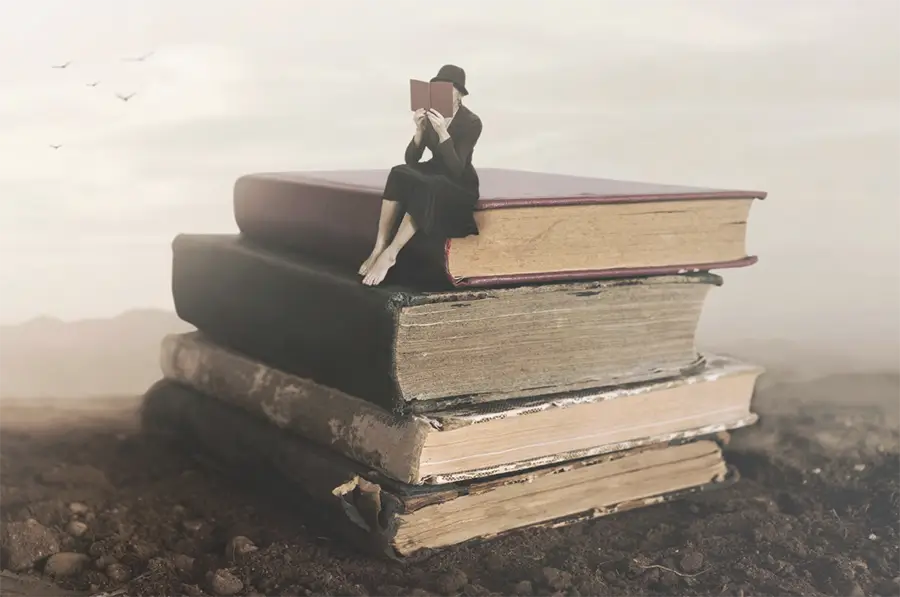WHODUNNIT?
Bringing a Little Mystery into the Classroom
Introduction | Background Knowledge | Activities | Extensions | Standards

Introduction
It was a dark and stormy afternoon. The students were working quietly when the door blew open, and the principal ran in. She explained that the library books were all missing and she needed the students to help her find them. The class closed their books and set out to look for clues.

Background Knowledge
The mystery genre is a subgenre of narrative fiction. Mysteries are also known as detective stories. A problem, usually a crime, needs to be solved. The main character is a detective, and clues are presented to the character and the reader. While the main character will eventually solve the mystery, the reader discerns the clues from the text and solves the mystery along with the character. Suspense is a characteristic of mysteries - many possible outcomes are presented, and the reader must wait to see the outcome. The author also introduces red herrings, which are false clues that will lead the detective and the reader to the wrong conclusion. The reader must make inferences as the clues are presented to conclude the outcome.
Mysteries require students to use deductive reasoning to solve the crime or figure out the mystery. Deductive reasoning means students are filling in the gaps in the information by making inferences.They are also using their background knowledge and the clues they find in the text to draw conclusions to solve the mystery. Deductive reasoning strengthens critical thinking skills. Solving a mystery also keeps students engaged and can be used across the curriculum.
The idea of a mystery can be expanded to encompass anything in the classroom that students do not know but can use clues and deductive reasoning to discover. The element of mystery, or the element of the unknown, encourages students to persevere to find the answer.

Activities
- Selective list of picture books to share with students:
- Secret Secret Agent Guy by Kira Bigwood (ISBN 978-1534469211) - Secret Secret Agent Guy is on a mission. Will he be able to complete his task before bedtime?
- The Case of the Missing Chalk Drawings by Richard Byrne (ISBN 978-1250189592) - The pieces of chalk draw a beautiful picture that is missing when they come back inside after lunch. What happened to the image?
- Who Pushed Humpty Dumpty? by David Levinthal (ISBN 978-0375841958) - Binky is the police officer on duty. He gets cases concerning Snow White, the Three Bears, Hansel and Gretel, and Humpty Dumpty. Binky is on the case.
- Baby Monkey, Private Eye by Brian Selznick (ISBN 978-1338180619) - Baby Monkey is happy to help people who come into his office…as soon as he has a snack.
- Who Done It? by Olivier Tallex (ISBN 978-1452141985) - This book is presented with one very simple question and pictures of characters on each page. The reader uses picture clues to answer the question.
- Find more titles from Hatchette Book Group
- Selective list of novels to share with students:
- Book Scavenger by Jennifer Chambliss Bertman (ISBN 978-1627791151) - When Emily learns that she has to move to San Francisco, she is looking forward to playing a literary scavenger hunt game developed by her favorite publisher. She makes a new friend in her new home. Together, Emily and James search for clues, for books, and for the people who attacked Garrison Griswold.
- Winterborne Home for Vengence and Valor by Ally Carter (ISBN 978-0358003199) - After accidentally starting a fire on campus, April and her friends find their school is hiding many secrets. They discover clues that April's mom left behind to learn the secrets and unravel the mysteries around them.
- Spy School by Stuart Gibbs (ISBN 978-1442421837) - Ben Ripley longs to be a CIA agent; he is unlike a typical CIA agent. He gets selected for a special magnet school, only to find that it is really a junior CIA school.
- Winterhouse by Ben Guterson (ISBN 978-1250123886) - Elizabeth Somers is an orphan. Her guardians send her to the Winterhouse Hotel, where she falls in love with the library. She quickly learns that there is a mystery at the hotel, and she is somehow a part of it.
- The Strangers by Margaret Peterson Haddix (ISBN 978-0062838384) - Chess, Emily, and Finn see news reports of kidnapped children who look exactly like them. They want to ask their mom about it, but she leaves on a trip for work. The kids start to follow clues and uncover a dangerous secret.
- Find more book suggestions from Beyond the Bookends.
-
Introduce the idea of asking questions with Lateral Thinking Puzzles. Students can ask yes or no questions to gather information to figure out the solution.
- Create virtual breakout rooms using Flippity (TeachersFirst review) using lateral thinking puzzles with the correct response as the code. This example includes a lateral thinking puzzle under lock #1.
-
Read Escape from Mr. Limoncello's Library by Chris Grabenstein (ISBN 978-0307931474) - This story is about a group of students who win a contest to spend the night in a library, but they quickly learn that they have to solve puzzles to figure out their way out.
- Integrate escape room activities in the classroom. Explore TwitterChats and OK2Ask sessions from TeachersFirst. Make your digital escape room at Room Escape Maker (TeachersFirst review).
-
Read Chasing Vermeer by Blue Balliet (ISBN 978-0439372978) - Petra and Calder find themselves in the middle of an art scandal when a valuable Vermeer painting disappears. They discover and solve clues to find the missing art.
- Pair with MET Mystery: An American Art Mystery (TeachersFirst review) to explore the American wing of the Metropolitan Museum of Art and solve the murder of John Singer Sargent's Madame X.
-
Read Math Curse by Jon Scieszka and Lane Smith (ISBN 978-0670861941) - A girl wakes up and learns that everything around her is a math problem. For her life to return to normal, she must break the Math Curse.
- Use place value clues to guess the Mystery Number.
-
Figure out which animal took the cake in The Deductive Detective by Brian Rock (ISBN 978-1607186250)
- Play Animal 20 Questions. Students can practice online and then play with a partner.
- Listen to episodes of Brains On! Podcast (TeachersFirst review) to learn more about animal mysteries such as "Why Do Dogs Wag Their Tails?" and "Glow for it! How Do Creatures Make Light?"
-
What happened to 8, and is 6 next? Find out in 7 Ate 9 by Tara Lazar (ISBN 978-1484717790)
- Extend the story by reading more short mysteries at 5 Minute Mysteries (TeachersFirst review). Students try to solve the mystery and identify the clues used to solve the mystery.

Extensions
-
The Next Agatha Christie
- Ask students to write and share interactive mystery stories using Elementari (TeachersFirst review). Find examples to share with students by browsing Elementari's library using "mystery" as the keyword search term.
-
Book Reviews
- Make a topic on Flip (TeachersFirst Review) where students can share video book reviews about mystery books.

Correlation to Standards
-
AASL National School Library Standards
- Inquire Shared Foundation, Think Domain - Learners display curiosity and initiative by: 1. Formulating questions about a personal interest or a curricular topic. 2. Recalling prior and background knowledge as context for new meaning.
- Inquire Shared Foundation, Share Domain - Learners adapt, communicate, and exchange learning products with others in a cycle that includes: 1. Interacting with content presented by others. 2. Providing constructive feedback. 3. Acting on feedback to improve. 4. Sharing products with an authentic audience.
- Include Shared Foundation, Share Domain - Learners exhibit empathy with and tolerance for diverse ideas by: 1. Engaging in informed conversation and active debate. 2. Contributing to discussions in which multiple viewpoints on a topic are expressed.
- Include Shared Foundation, Grow Domain - Learners demonstrate empathy and equity in knowledge building within the global learning community by: 1. Seeking interactions with a range of learners.
- Collaborate Shared Foundation, Think Domain - Learners identify collaborative opportunities by: 1. Demonstrating their desire to broaden and deepen understandings. 2. Developing new understandings through engagement in a learning group. 3. Deciding to solve problems informed by group interaction.
- Collaborate Shared Foundation, Create Domain - s Learners participate in personal, social, and intellectual networks by: 1. Using a variety of communication tools and resources. 2. Establishing connections with other learners to build on their own prior knowledge and create new knowledge.
- Collaborate Shared Foundation, Grow Domain - Learners actively participate with others in learning situations by: 2. Recognizing learning as a social responsibility.
- Explore Shared Foundation, Think Domain - Learners develop and satisfy personal curiosity by: 1. Reading widely and deeply in multiple formats and writing and creating for a variety of purposes.
- Explore Shared Foundation, Create Domain - Learners construct new knowledge by: 1. Problem solving through cycles of design, implementation, and reflection.
- Explore Shared Foundation, Share Domain - Learners engage with the learning community by: 3. Collaboratively identifying innovative solutions to a challenge or problem.
- Explore Shared Foundation, Grow Domain - Learners develop through experience and reflection by: 1. Iteratively responding to challenges. 2. Recognizing capabilities and skills that can be developed, improved, and expanded. 3. Open-mindedly accepting feedback for positive and constructive growth.
-
ISTE Standards for Students
- Empowered Learner - 1b. Students build networks and customize their learning environments in ways that support the learning process. 1c. Students use technology to seek feedback that informs and improves their practice and to demonstrate their learning in a variety of ways.
- Knowledge Constructor - 3d. Students build knowledge by actively exploring real-world issues and problems, developing ideas and theories, and pursuing answers and solutions.
- Innovative Designer - 4d. Students exhibit a tolerance for ambiguity, perseverance, and the capacity to work with open-ended problems.
- Global Collaborator - 7c. Students contribute constructively to project teams, assuming various roles and responsibilities to work effectively toward a common goal.
